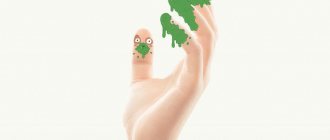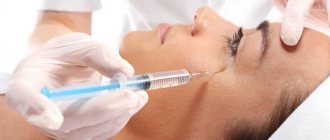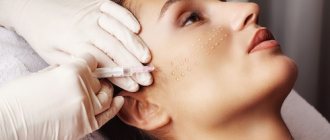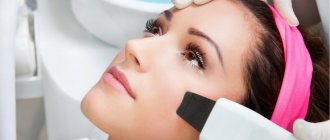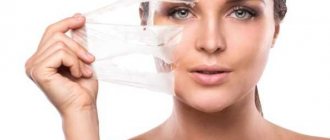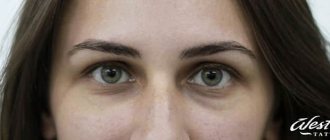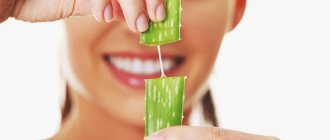Table of contents
- Etiology and pathogenesis
- Clinical manifestations
- Principles of treatment, hardware methods for treating rosacea
Cuperosis (dilated capillaries, couperose-prone skin, couperosa) is a persistent local expansion of small capillaries with thickening and a pronounced decrease in the elastic properties of their walls, as well as blood stagnation. Unlike rosacea, it almost never goes away on its own.
In our company you can purchase the following equipment for the treatment of rosacea:
- M22 (Lumenis)
- AcuPulse (Lumenis)
- Fraxel (Solta Medical)
- UltraPulse (Lumenis)
There are no statistical data on rosacea as an independent nosology, however, it is believed that, together with rosacea, rosacea affects from 1% to 22% of the population, depending on the region of residence.
Expert commentary
Elena Oleinichenko, cosmetologist, dermatologist, dermatovenerologist
Dermatologist, cosmetologist, expert at the Premium Aesthetics Academy of Cosmetology Elena Oleinichenko comments:
“Cooperosis can be corrected, but, alas, it is not completely curable. This must be taken into account when starting a course of therapy. If we consider the problem as a whole, success is based on the patient’s efforts to eliminate provoking factors: exposure to solar radiation, high and low temperatures, wind, alcohol, spicy foods, emotional stress, endocrine diseases, cosmetics and detergents that have an irritating effect. Treatment measures are based on the principles of adequate daily skin care. It includes the use of sunscreens and preparations containing chemical ultraviolet filters. Of the hardware techniques, only IPL radiation from the M22 device can solve this problem quickly and without leaving a trace.”
You can sign up for the procedure by phone: +7 (499) 370 45 96.
Etiology and pathogenesis of rosacea
The etiological factors of rosacea can be divided into endogenous and exogenous.
Endogenous factors include the influence of heredity. A decrease in the elasticity of the vascular wall is a genetically determined condition, which can be aggravated by various provoking (exogenous) factors - heat, cold, hormonal imbalance, somatic diseases, weakness of the valve apparatus of the veins of the lower extremities, etc.
Among the exogenous factors, it is worth highlighting the following:
- Nervous strain - in this case, large main vessels narrow, which increases the pressure in them, and the vessels of the peripheral network, on the contrary, expand.
- Smoking - promotes spasm and decreases the strength of the vascular wall.
- Diet - too hot, spicy or salty food, frequent and/or heavy consumption of alcoholic beverages provoke exacerbation and progression of rosacea.
- Climate - this includes ultraviolet radiation, prolonged exposure to strong gusty winds, cold or too hot and humid climate.
- Lifestyle - rosacea can worsen after visiting a sauna or bathhouse, with mechanical pressure on the skin (wearing tight synthetic clothing), while working with formaldehyde, etc.
Food triggers for rosacea are similar to those for rosacea. This includes hot tea and coffee, wine, strong alcohol, products with capsaicin (spices, hot sauces, hot and red peppers) and with cinnamaldehyde (tomatoes, chocolate, citrus fruits).
There is evidence that disruption of the microbial composition of the skin can provoke dysfunction of the epidermal barrier, which increases the skin's sensitivity to external factors and contributes to the development of rosacea.
conclusions
- The primary cause of rosacea is genetic predisposition.
- To achieve a better treatment effect, you should review your diet and exclude hot, spicy and fatty foods from the menu.
- It is necessary to start treatment as soon as possible so that the disease does not progress.
- You should choose creams that contain (for example, Anti-rosacea cream) plant extracts, oils, and vitamins.
- Medicinal products should be used in a course of at least 2-3 months.
Clinical manifestations of rosacea
There are 4 stages of rosacea:
- Stage 1 - under certain conditions (for example, in a hot room with dry air), the patient may experience erythema and irritation on the face. Against the background of erythema, several dilated capillaries become noticeable.
- Stage 2 - gradually dilated capillaries unite into a network, and the vessels are colored more brightly.
- Stage 3 - congestive erythema appears with individual or multiple telangiectasias. A network of dilated capillaries, mainly in the central third of the face, becomes clearly visible.
- Stage 4 - the visibility of capillaries increases, vessels on the entire surface of the face are involved in the pathological process. Areas of local blanching appear as a result of capillary spasm.
By studying the etiological factors and assessing the clinical manifestations of rosacea, we can conclude that this condition is similar to rosacea. Indeed, they have a lot in common - there is even an opinion that rosacea is the next stage in the development of rosacea. However, with rosacea, large and small vessels are affected, while with rosacea, only small ones are affected. Other differences between these pathologies are presented in table. 1 .
Table 1. Main differences between rosacea and rosacea
| Characteristic | Cuperosis | Rosacea |
| Localization | Typically occurs on the nose, cheeks and cheekbones. | Usually the central third of the face is affected - the cheeks and wings of the nose. |
| Epidemiology | It is observed in adults of any gender and age, but more often after 40 years. | It is observed in women aged 35–65 years with fair skin, most often in menopause. |
| Etiology | Inheritance, stress, smoking, climate, lifestyle. | Inheritance, Demodex mites, disruption of the immune system, abnormal signal transmission to blood vessels, microflora dysbiosis. |
| Clinic | The main symptom is telangiectasia, the number of which increases over time. In the future, the skin may become flabby and dry, and peeling occurs. With rosacea, triggers cause dilation of blood vessels, which subsequently do not narrow to normal diameter. | Erythema and telangiectasia on the cheeks and forehead, inflammatory papules and pustules - mainly in the nose, forehead and cheeks. When the lesion affects the sebaceous glands, rhinophyma may occur. In the ophthalmic type, injection of conjunctival vessels is observed. |
| Flow | Chronic, almost never goes away on its own. | Chronic, in mild cases it can go away on its own when the provoking factors (triggers) are eliminated. |
Causes of the disease:
- Heredity. This has long been a proven fact!
- Ultra-violet rays. Harmless sun exposure leads to fragility of vascular walls, as well as photoaging. Therefore, it is very important to use sunscreen all year round.
- Temperature changes and contrasting washes.
- Bad habits.
- Stress provokes the onset of the disease, because due to negative emotions, pressure increases and the walls of the capillaries are damaged.
- Some diseases of internal organs.
- Incorrect care. For example, aggressive salon procedures can thin the already delicate skin and reduce its immunity, which can subsequently injure the walls of blood vessels.
Principles of treatment of rosacea
The primary treatment strategy for rosacea is avoidance of trigger factors . Each patient has an individual set of such factors and is determined empirically. Avoiding triggers is necessary to avoid exacerbations and progression of the disease.
An important therapeutic point is the fight against stress . Normalization of the psycho-emotional state and, in particular, the work of the autonomic nervous system helps prevent exacerbations of rosacea and its further aggravation.
One non-medicinal method is the use of cosmetics . Properly selected makeup hides redness of the skin and allows such patients to feel comfortable in public places.
UV filters every day . Preference should be given to physical filters - zinc oxide and titanium dioxide, as they are better suited for sensitive skin.
Among the cosmetic ingredients for rosacea, the following are recommended: horse chestnut (Aesculus Hippocastanum), nettle extract (Urtica Dioic Extract), ivy extract (Hedera Helix Leaf Extract), Asian centella extract (Centella Asiatica Extract), green tea extract (Camelia Sinensis Leaf Extract) , blueberry extract (Vaccinium Angustifolium Extract), vitamin K.
For rosacea, you can use electrosurgery - this method is suitable for removing small and medium-sized vessels. It is recommended to use multiple short microcoagulations at low energy levels with a distance of 1–2 mm between them. You should start with the most visible vessels and gradually move towards the center of the face.
Medicinal methods (for example, topical digoxin) have a rather weak effect, but can be used as maintenance therapy.
A real breakthrough in the treatment of rosacea has become methods of percutaneous photocoagulation of blood vessels , which are implemented using various lasers, as well as IPL systems. The principle of operation of all these devices is selective photothermolysis: heating and destruction (thermolysis) of surface vessels due to the selective absorption of radiation by hemoglobin.
The most common option is to use IPL therapy, such as M22-IPL. Effective treatment of rosacea using IPL is characterized by simplicity, high speed of procedures and a minimal rehabilitation period. In some cases, IPL therapy is combined with the use of an Nd:YAG laser: this is justified when it is necessary to coagulate deep-lying large vessels.
Questions from our users:
- rosacea treatment with pharmaceuticals
- rosacea cosmetology treatment
- rosacea professional cosmetics
- rosacea laser treatment or photorejuvenation
How to choose the right anti-rosacea drug
When choosing a medicinal cream, you need to pay attention to the composition. It must contain the above active components. It will also not be amiss if the product contains natural shea, corn or olive oils.
The cosmetics market offers both expensive products from leading brands and budget ones, so everyone can choose the most suitable product for themselves.
Before purchasing, it would be a good idea to read the instructions and read reviews from doctors and users.
When buying a cosmetic product, you should pay attention to the expiration date. It must be normal, otherwise a spoiled product will not only not bring any benefit, but may also aggravate the situation.
Below we consider the rating of the most popular and effective anti-cupid drugs.
How does bioreparation differ from biorevitalization?
Patients often confuse biorevitalization and bioreparation with each other. Indeed, these are largely similar procedures.
But they also have serious differences. First of all, the composition of the administered “cocktails” and the principle of their effect on tissues differ. During biorevitalization, hyaluronic acid is used without adding additional components to it. The technique is aimed at restoring tissue hydrophilicity (water balance).
Bioreparation preparations actively stimulate skin rejuvenation through modified forms of hyaluronic acid and peptide-vitamin complexes. And they, in turn, stimulate the active synthesis of new collagen and elastin fibers, activate the work of fibroblasts, reduce the activity of pigment cells, and eliminate pigmentation. Also, the hyaluronic-vitamin-peptide complex has an antioxidant and protective effect.
What is bioreparation?
Recently, a facial procedure called bioreparation has been gaining popularity. Why is she so good?
Bioreparation is an injection procedure during which hyaluron-containing preparations mixed with vitamins, peptides and amino acids are injected into the skin. This “cocktail” gives a powerful charge to our skin, allowing us to restore the natural level of tissue moisture, stimulates collagen synthesis, rejuvenates the skin, eliminates fine wrinkles and pigmentation.
Course procedure. In just a few sessions, it is possible to improve the appearance and complexion, tighten the oval, and give elasticity to the tissues.
The drugs are injected into the deep layers of the skin, remaining there for a long time, which increases the effectiveness of therapy. The action of amino acids is aimed at stimulating the natural production of collagen fibers. Due to the action of peptides, fat cells are destroyed, the oval of the face is tightened, and tissue swelling is reduced.
Indications for bioreparation
Bioreparation is recommended when:
- Insufficient moisture of the epidermis.
- Acne, consequences of acne.
- Expression wrinkles.
- Loss of elasticity and skin tone.
- Pigment spots on the face, foci of rosacea.
- Minor superficial burns and scars.
- Ptosis (drooping) of soft tissues.
It is important to remember that before performing bioreparation, a doctor is always consulted to identify all possible contraindications to the intervention.


